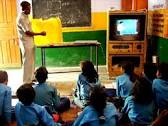The Evidence Hub intiative, part of The Open learning Network (OLnet), aims to gather, collate and harness collective intelligence from and about the emerging field of OER, providing a structure for "debates around key questions from the OER movement" (McAndrew and Farrow, 2013, p.68).
One of the underlying challenges for OERs is the lack of a robust evidence base upon which to base policy and practice (McAndrew and Farrow, 2013). On a deeper level, debates about underpinning learning theory (Nichols, 2003) contribute to the challenge, whilst the socio-cultural influences of technology on educational practice are generating a faster pace of change that few are familiar with. It is this gap in both knowledge and "know how" (Cook and Brown, 1999) that the Evidence Hub sets out to address.
The openness of the Evidence Hub (in contrast to another OLnet project, Cloudworks) embraces the diversity and inclusivity of OER itself. My concern about the Evidence Hub relates to my experience of using Cloudworks (in my case through course H800). The utility of both depends on the motivations of the user group, requiring active, purposeful and mutually respectful contributions. Without this the resource risks rapidly becoming redundant.
The success of the OER movement will be in its ability to embrace diversity and mobilise the social capital it holds towards a shared purpose, in the model of a New Social Movement (Muijs et al, 2010). Along with other tools in the OLnet portfolio, the Evidence Hub may unintentionally become an enduring and stabilising cultural artefact of the movement itself.
References
-
Cook, S.D.N and Brown, J.S. (1999) ‘Bridging epistemologies: the generative dance between organizational knowledge and organizational knowing’, Organization Science, vol 10, no 4, pp 381–400.
- McAndrew, P. and Farrow, R. (2013) ‘Open education research: from the practical to the theoretical’ in McGreal, R., Kinuthia, W. and Marshall, S. (eds) Open Educational Resources: Innovation, Research and Practice, Vancouver, Commonwealth of Learning and Athabasca University, pp. 65-78.
- Muijs, D., West, M. and Ainscow, M. (2010) 'Why network? Theoretical perspectives on networking', School Effectiveness and School Improvement: An International Journal of Research, Policy and Practice, vol 21, no 1, pp 5-26.
-
Nichols, M. (2003) ‘A theory for elearning’, Educational Technology & Society, vol. 6, no. 2, pp. 1–10.
